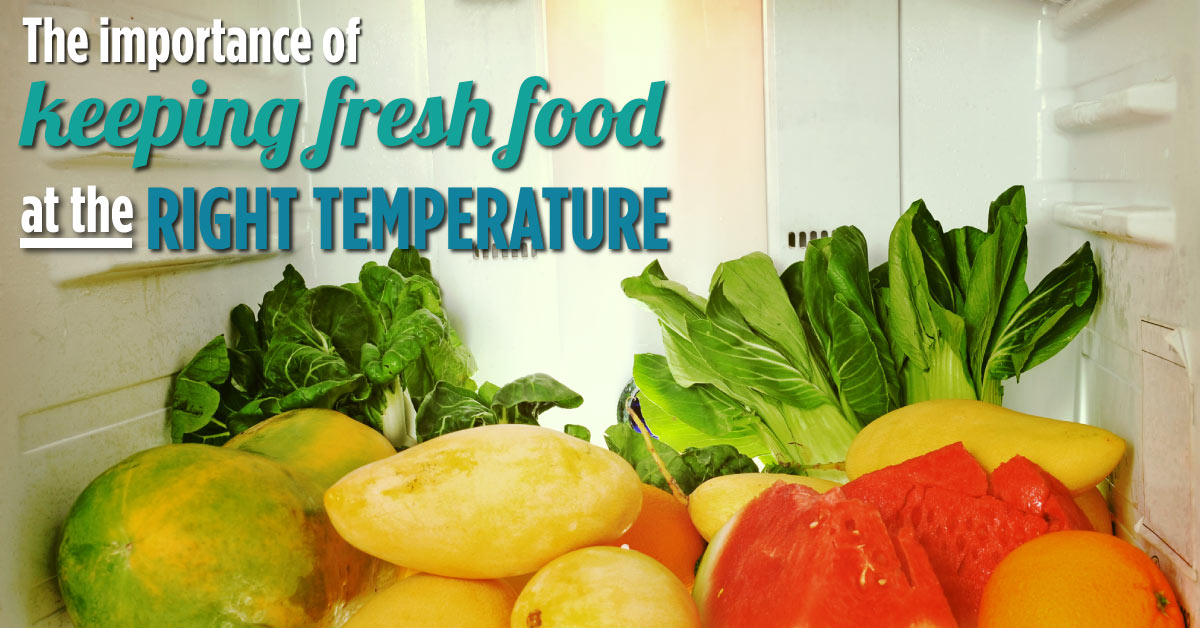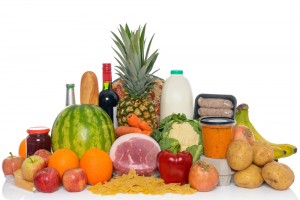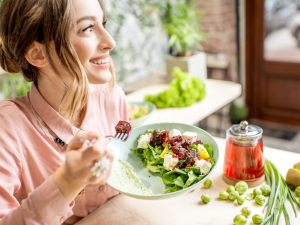
Now that the weather is warmer it is even more important to ensure your food is being kept at the correct temperature.
To avoid food poisoning, you need to keep fresh food chilled at the right temperature. This should be at or below 5ºC, any temperature above this, and you run the risk consuming contaminated food.
Correctly storing food is essential to reduce bacteria forming that can cause food poisoning. Often contaminated food looks, smells and tastes normal so you can unwittingly get sick without even being aware of what it was you ate. Bacteria thrives between 5°C and 60°C, and some foods are higher risk than others for growing and multiplying bacteria, so it’s important to be extra vigilant with these.
Some of the high-risk foods to be aware of include:
 Meat – raw and cooked, especially poultry such as chicken and turkey
Meat – raw and cooked, especially poultry such as chicken and turkey- Dairy products and dairy-based desserts
- Eggs and foods cooked with eggs like quiche
- Deli meats such as ham and salami
- Seafood and dishes made with seafood
- Cooked rice and pasta
- Fruit salads
- Food from jars, cans and packages that have been opened.
A general rule of thumb is that is if any high-risk food has been above 5ºC for 2 to 4 hours then it needs to be consumed immediately or thrown out. After 4 hours, it should be thrown out.
Organic & Quality Foods go above and beyond to ensure your order is kept at the optimum temperature for freshness. During delivery to our packing coolrooms, while your order is being packed and in the refrigerated delivery vans, produce is kept at the correct temperature throughout the whole process.
Once you have received your food delivery, here are some tips to keep your food at the right temperature at home:
Over-storing the Fridge
Don’t jam too much into your fridge as the cold air needs to circulate properly to get food to the right temperature. If your fridge is overloaded, then take out bulky items such as canned or bottled drinks that can have ice added to them when needed.
Storing Fruits and Vegetables
Fruits and vegetables are not considered high risk unless there is a likelihood of them being contaminated by other foods, or they’ve been prepared as a salad with egg-based mayonnaise. However, the right temperature will help to prolong the shelf life and freshness of your produce.
Use the designated veggie bin in your fridge so there is less chance of produce coming into contact with high-risk foods such as raw meat and chicken. Any cut up fruits and vegetables need to be stored in separate containers and should be thrown away after two or three days. Always remove produce from plastic bags, so it doesn’t sweat and start deteriorating. Fridge storage isn’t always best for some vegetables, tomatoes ripen up and get juicier if they’re kept in the fruit bowl, and potatoes should be stored in a cool, dark place, so they don’t sprout. Don’t wash them before storing as they can go mouldy.
If you’ve bought too much of any particular produce, then you can freeze it in small batches by cutting up and blanching to kill bacteria. Cooking fruit such as apples, pears, berries and rhubarb then freezing it is a great fresh food storage method.





